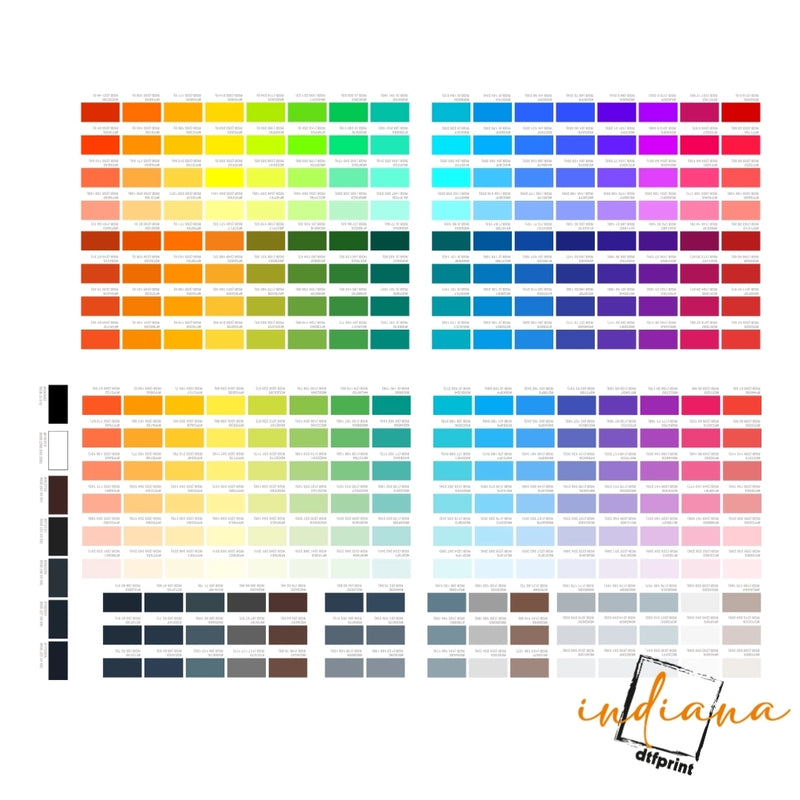The fashion sector has small profit margins and fierce competition. Pricing becomes even more important when it comes to premium apparel. Choosing the appropriate price for luxury DTF clothing necessitates finding a balance between covering expenses, maintaining quality, and turning a profit.
You could lose money if you set your price too low. Customers might shop elsewhere if your prices are too expensive. This blog breaks down the steps for pricing premium DTF apparel while making sure your brand stands out in the luxury market.
Understanding the Real Cost of DTF Printing
The first step is knowing your costs. The cost of DTF printing for luxury apparel goes beyond just ink and film. You need to account for:
- Film and ink costs
- Premium blank apparel cost (better fabrics mean higher prices)
- Heat press time and energy
- Labor for prep and finishing
- Packaging and branding
A clear cost breakdown DTF print cost helps you see where money is going. This makes it easier to set prices that cover every step without guessing.
Gang Sheet Savings
When producing large runs, gang sheet cost savings can help reduce expenses. By printing multiple designs on a single sheet, you lower material costs per unit.
For brands selling in bulk, this also ties into wholesale DTF transfers pricing. The more efficient the process, the more room you have to increase profit margins while keeping prices fair.
The Role of Fabric in Pricing
Luxury fashion relies heavily on fabric choice. Luxury fabric compatibility with DTF is essential since premium fabrics are more expensive but add value to the final product.
For example, a basic cotton tee may cost less, but silk blends or heavy organic cotton increase both premium blank apparel cost and the retail price. Customers in the luxury market expect better materials, so don’t cut corners here.
Design Complexity
Not all prints cost the same. Design complexity impact on pricing is another factor. Detailed, multi color designs use more ink, take longer to print, and may require higher resolution setups.
This directly influences how to price high quality DTF clothing. Simpler designs allow for lower pricing, while complex prints should be positioned as premium items to justify the additional cost.
Balancing Quality with Profit
This is where strategy comes in. Balancing quality and profit DTF requires setting prices that reflect both craftsmanship and customer expectations.
If your brand positions itself in the luxury space, customers are willing to pay more. The trick is ensuring they see value in the high-end DTF apparel pricing you set. Strong branding, unique designs, and excellent customer service all reinforce that value.
Wholesale and Bulk Orders
When working with bulk buyers or retailers, wholesale DTF transfers pricing comes into play. Wholesale rates are usually lower per piece, but you make up for it in volume.
Here, efficient use of gang sheet cost savings and optimized workflows can keep production costs low while still delivering profit margins for custom apparel.
Profit Margins That Work
Your margin is what keeps your business sustainable. Typical profit margins for custom apparel can range between 30% and 60% depending on the brand and market.
Luxury buyers are not just purchasing clothing, they’re buying into exclusivity. This gives you more room to set prices above standard retail while still staying competitive.
Conclusion
Luxury fashion is about more than looks; it’s about quality and value. By focusing on cost breakdown DTF print cost, fabric choice, and design complexity impact on pricing, you can set fair prices that reflect craftsmanship.
The key to success in pricing premium DTF apparel is balancing what it costs you to produce with what your customer is willing to pay. Done right, this creates sustainable growth without sacrificing brand value.
For reliable transfers and support with high-end DTF apparel pricing, check out Indiana DTF Print and see how professional solutions can help you achieve both quality and profit.
FAQs
1. How do I set prices for high-end DTF apparel?
Start with a full cost breakdown DTF print cost, including fabric, labor, and transfers. Add a profit margin that reflects luxury branding while staying fair to your market.
2. Does fabric choice affect DTF pricing?
Yes. Luxury fabric compatibility with DTF impacts cost since premium fabrics are more expensive. Using high quality blanks raises production costs but allows for higher retail prices.
3. How do gang sheets save money?
Gang sheet cost savings come from fitting multiple designs on one sheet. This reduces waste, cuts material expenses, and helps lower per unit printing costs for bulk or wholesale orders.
4. What profit margins should I expect with DTF apparel?
Profit margins for custom apparel usually range from 30% to 60%. For luxury brands, margins may be higher if the product, fabric, and branding justify the premium pricing.
5. How does design complexity affect pricing?
The design complexity impact on pricing is big. More colors and detail use more ink and time. Simple prints are cheaper to produce, while complex designs should be priced as premium items.











